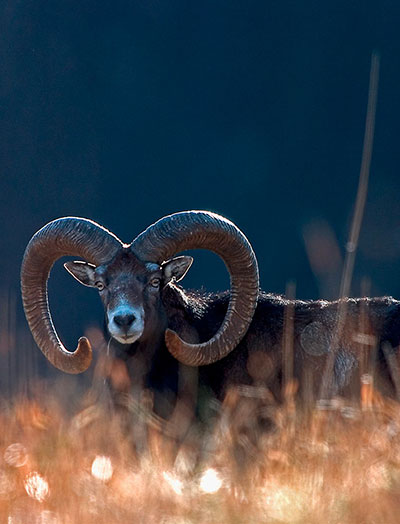
These wild sheep prefer large, continuous, light deciduous, mixed and pine forests as habitat. In areas with a smaller proportion of forests, mouflon can also switch to browsing in fields. They are actually fairly frugal and are content with sparse food. However, one can also see the “lawnmower effect” so familiar from domestic sheep with mouflons – especially when large herds cause massive browsing damage to grain and rapeseed fields, for example. They also cause damage by trampling and to stores.
An electric fence with four wires, or preferably five wires when large numbers occur, has proven successful in preventing such damage. A powerful
12 V AKO fence device with a fence voltage of around 4000 to 5000 volts and an impulse energy of 1 to 5 Joules is used. Excellent grounding is a basic prerequisite for any electric fence. As wild boar are also found in many areas, this should also be taken into account when setting up an electric fence to deter mouflons.
The defence fence must be at 1.60 m to 1.80 m in height. A
wooden post should be sunk at each corner of the field and, depending on the fence length, halfway along each side of the field, to which
insulators are screwed. (Plastic) posts, preferably with integrated
wire eyelets, are installed in between (depending on the terrain) at intervals of 7 m to 8 metres depending on the height of the fence. The wires are tensioned on the
wood posts, whereas they only need to be inserted into the eyelets of the
plastic posts.